Tanzania is a country in East Africa with diverse wildlife and a vibrant culture. When planning a trip to Tanzania, it is essential to consider the rainy season, which runs from March to May, and the dry season from June to October. The rainy season brings lush green landscapes, lower prices, and fewer crowds but also heavy rainfall and limited access to certain areas. The dry season is generally considered the best time to visit Tanzania as the weather is cooler and drier. Wildlife viewing is also better, but prices are higher, and destinations can be crowded.
Best Time for Wildlife Safaris
Tanzania is well-known for its wildlife safaris, and the best time to visit for this purpose is during the dry season. The dry season runs from June to October, and it is characterized by warm, sunny days and cool nights. During this time, the animals are easier to spot because they gather around water sources, and the vegetation is less dense, making it easier to see them.
Serengeti National Park
Serengeti National Park is one of the most popular destinations for wildlife safaris in Tanzania. The best time to visit this park is between June and October, during the dry season. During this time, the wildebeest migration takes place, and visitors can witness millions of wildebeest, zebras, and gazelles moving across the plains in search of food and water.
Ngorongoro Conservation Area
The Ngorongoro Conservation Area is another popular destination for wildlife safaris in Tanzania. The best time to visit this area is also during the dry season, between June and October. Visitors can see a wide variety of animals here, including lions, elephants, zebras, and rhinos. The area is also home to the Ngorongoro Crater, which is a UNESCO World Heritage Site and one of the best places in Tanzania to see the Big Five.
Selous Game Reserve
The Selous Game Reserve is the largest in Africa and is home to a wide variety of wildlife, including elephants, lions, leopards, and hippos. The best time to visit this reserve is during the dry season, between June and October. Visitors can take boat safaris along the Rufiji River, which is home to a large number of crocodiles and hippos.
Optimal Season for Climbing Mount Kilimanjaro
Climbing Mount Kilimanjaro is a once-in-a-lifetime experience, but it is important to choose the right time of year to attempt the climb. The optimal season for climbing Mount Kilimanjaro is during the dry season, which runs from June to October. During this time, the weather is generally clear and dry, making it easier to climb the mountain.
It is important to note that even during the dry season, the weather on Mount Kilimanjaro can be unpredictable, and climbers should be prepared for sudden changes in weather conditions. It is also important to acclimatize properly before attempting to climb the mountain, as altitude sickness can be a serious issue.
During the wet season, which runs from November to May, climbing Mount Kilimanjaro can be more challenging due to the heavy rainfall and muddy conditions. However, some climbers prefer to climb during this time as the mountain is less crowded and the scenery is lush and green.
Ideal Months for Beach Holidays
Tanzania is home to some of the most beautiful beaches in the world. The beaches are a popular destination for tourists who want to relax and enjoy the sun, sand, and sea. The best time to visit Tanzania for beach holidays is during the dry season, which runs from June to October.
Zanzibar
Zanzibar is an archipelago located off the coast of Tanzania. The islands are known for their beautiful beaches and crystal-clear waters. The best time to visit Zanzibar for beach holidays is from June to October. During this time, the weather is dry and sunny, with temperatures ranging from 25°C to 30°C. The water is warm and perfect for swimming, snorkelling, and diving.
Pemba Island
Pemba Island is located north of Zanzibar and is known for its secluded beaches and unspoiled coral reefs. The best time to visit Pemba Island for beach holidays is from June to October. During this time, the weather is dry and sunny, with temperatures ranging from 25°C to 30°C. The water is warm and perfect for swimming, snorkelling, and diving.
Mafia Island
Mafia Island is located south of Zanzibar and is known for its pristine beaches and marine life. The best time to visit Mafia Island for beach holidays is from June to October. During this time, the weather is dry and sunny, with temperatures ranging from 25°C to 30°C. The water is warm and perfect for swimming, snorkelling, and diving.
Peak and Off-Peak Travel Periods
Tanzania is a year-round destination, but the best time to visit depends on what you want to see and do. Peak travel periods in Tanzania are generally from June to October and from December to February. These months coincide with the dry season, which is the best time for game viewing in Tanzania’s national parks.
During peak travel periods, the weather is dry and sunny, and wildlife is more concentrated around water sources, making it easier to spot. However, this also means that the parks can get crowded, and prices for accommodations and tours can be higher.
Off-peak travel periods in Tanzania are from March to May and from November to mid-December. These months are known as the rainy season or the green season. While the rains can make some roads impassable and some parks may be closed, the green season offers a unique experience for travellers who want to see Tanzania’s lush landscapes and baby animals.
During the green season, the parks are less crowded, and prices for accommodations and tours are generally lower. It’s also a great time for bird watching, as migratory birds flock to Tanzania during this time.
Weather Patterns by Region
Northern Tanzania
The weather in Northern Tanzania is generally cooler and drier compared to other regions in Tanzania. The best time to visit the northern circuit parks, such as Serengeti and Ngorongoro, is during the dry season from June to October. During this time, the grass is shorter, making it easier to spot wildlife. However, it can get chilly at night, so it’s advisable to pack warm clothing.
Southern Tanzania
Southern Tanzania experiences two rainy seasons, with the long rains occurring from March to May and the short rains from November to December. The best time to visit the southern parks, such as Selous and Ruaha, is during the dry season from June to October. During this time, the vegetation is less dense, making it easier to spot wildlife. However, it can get hot during the day, so it’s advisable to wear light clothing.
Coastal Areas
The coastal areas of Tanzania, including Zanzibar, experience a tropical climate with high humidity throughout the year. The best time to visit the coast is from June to October when the weather is dry and sunny. The rainy season occurs from March to May and November to December, so it’s best to avoid visiting during these months. The temperature is warm throughout the year, with an average of 27°C (81°F). It’s advisable to bring light and breathable clothing if visiting the coast.
Cultural Events and Festivals
Tanzania is a country with a rich cultural heritage, and several festivals and events take place throughout the year that showcase this. Here are some of the major cultural events and festivals in Tanzania:
- Mwaka Kogwa Festival: This festival is celebrated in Zanzibar and marks the beginning of the Islamic New Year. It is a four-day event that includes traditional dances, music, and games. One of the highlights of the festival is the mock fight that takes place between two men representing different villages.
- Saba Saba Day: This is a national holiday in Tanzania that is celebrated on July 7th. It marks the day when the Tanganyika African National Union (TANU) was formed in 1954. The day is celebrated with parades, speeches, and cultural performances.
- Nane Nane Day: This is another national holiday in Tanzania that is celebrated on August 8th. It is a day to celebrate the country’s agricultural sector and is marked by exhibitions, competitions, and cultural performances.
- Kilimanjaro Marathon: This is an annual event that takes place in February and attracts runners from all over the world. The marathon starts and finishes at the Moshi Stadium and takes runners through the beautiful countryside around Mount Kilimanjaro.
- Zanzibar International Film Festival: This is a week-long festival that takes place in Stone Town, Zanzibar, and showcases films from all over Africa and the world. The festival also includes workshops, seminars, and cultural performances.
Related
Considerations for Budget Travelers
Tanzania can be an affordable destination for budget travellers if planned well. It is best to avoid the peak season (June to October and December to February) and opt for the low season (March to May and November) to save on accommodations and tours. Budget travellers can stay in hostels, camping sites, or guesthouses and use public transportation to save money. They can also try local street food and restaurants for cheaper meals. Booking accommodations and tours in advance and researching prices are important to get the best deals.
Tips for Health and Safety
Tanzania is a safe country to visit, but it is important to take precautions to ensure a healthy and safe trip. Here are some tips to keep in mind:
Vaccinations
Before travelling to Tanzania, it is recommended that visitors get vaccinated against yellow fever, hepatitis A and B, typhoid, and meningitis. Visitors should also make sure their routine vaccinations are up to date, including measles, mumps, and rubella (MMR), diphtheria, tetanus, and pertussis (DTaP), and the flu shot.
Malaria Prevention
Malaria is a risk in Tanzania, especially during the rainy season. Visitors should take precautions to prevent mosquito bites, including wearing long sleeves and pants, using insect repellent, and sleeping under mosquito nets. It is also recommended to take antimalarial medication.
Food and Water Safety
Visitors should be cautious about what they eat and drink in Tanzania to avoid getting sick. It is recommended to drink bottled or boiled water, avoid ice cubes, and only eat food that has been cooked and is still hot. Visitors should also avoid street food and uncooked fruits and vegetables that may have been washed with contaminated water.
Safety Precautions
Visitors should take basic safety precautions, such as keeping valuables out of sight and not travelling alone at night. It is also important to be aware of the potential for petty crime, such as pickpocketing and theft. Visitors should also be cautious when using public transportation and should only use reputable taxi companies.
Related
- Best Holiday Destinations In South Africa
- Best Time to Visit Kruger National Park, South Africa
- Cheapest Countries to Visit in Africa




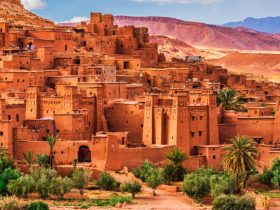
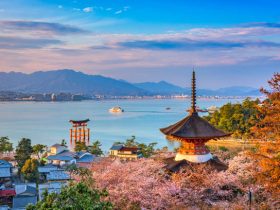
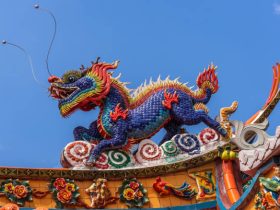



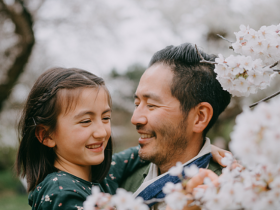
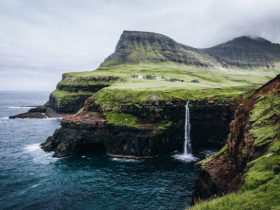
Leave a Reply